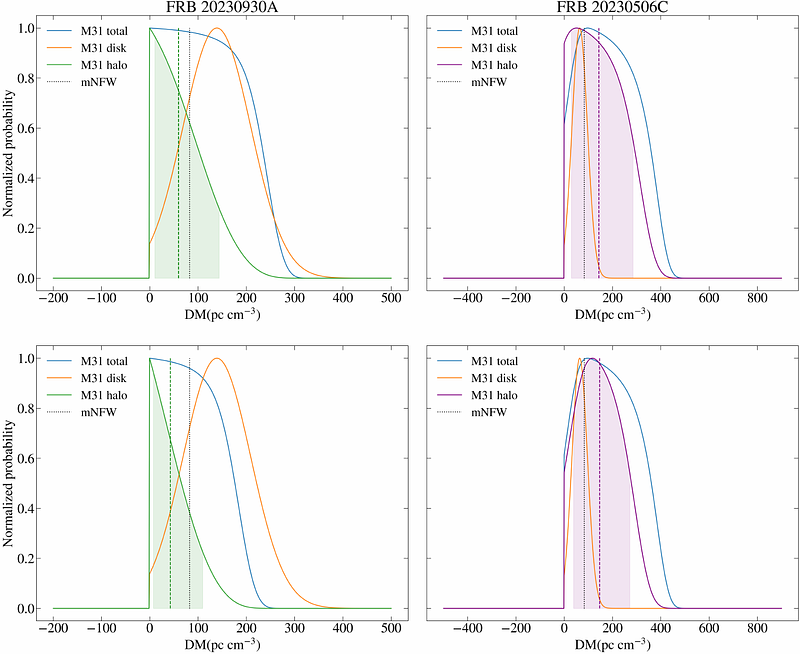Evidence for a hot galactic halo around the Andromeda Galaxy using fast radio bursts

Evidence for a hot galactic halo around the Andromeda Galaxy using fast radio bursts
Reshma Anna-Thomas, Casey J. Law, Eric W. Koch, Alexa C. Gordon, Kritti Sharma, Benjamin F. Williams, Nickolas M. Pingel, Sarah Burke-Spolaor, Zhuo Chen, Jordan Stanley, Calvin Dear, Frank Verdi, J. Xavier Prochaska, Geoffrey C. Bower, Laura Chomiuk, Liam Connor, Paul B. Demorest, Anya Nugent, Fabian Walter
AbstractFast Radio Bursts (FRBs) are millisecond-duration radio transients that serve as unique probes of extragalactic matter. We report on the discovery and localization of two FRBs piercing the Andromeda Galaxy (M31) by the realfast fast transient detection system at the Very Large Array. Their unique sightlines allow constraints on M31's electron density distribution. We localized FRB 20230903A to its host galaxy at a redshift $z=0.09$ and FRB 20230506C to a host galaxy at a redshift $z=0.39$. After accounting for the dispersion contribution from the Milky Way, the host galaxy and the intergalactic medium along the line of sight of the FRBs, we estimate that M31 alone will likely contribute between 21-217 $\mathrm{pc~cm^{-3}}$ along FRB 20230903A and between 43-338 $\mathrm{pc~cm^{-3}}$ along FRB 20230506C with a 90% confidence. We also modeled the M31 disk's contribution to the DM to determine the halo contribution. We find that the halo of M31 will contribute between 9-145 $\mathrm{pc~cm^{-3}}$ along FRB 20230903A and between 28-286 $\mathrm{pc~cm^{-3}}$ along FRB 20230506C with 90% confidence. The measured values of $\rm DM_{M31,halo}$ are consistent with the predictions from the modified Navarro-Frenk-White profile of M31's halo for a given impact parameter. The ions of the cool halo alone cannot account for the calculated $\rm DM_{M31,halo}$ and therefore this measurement presents indirect evidence of the hot halo of M31. We also suggest a possible intersection of the line of sight of FRB 20230506C with a hot baryon bridge between M31 and the Milky Way